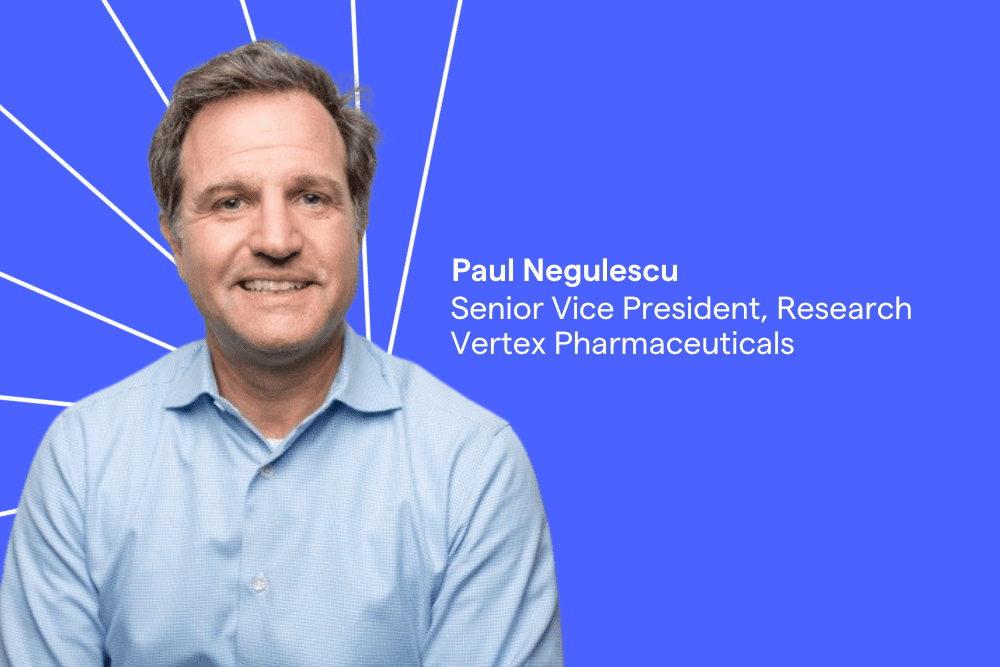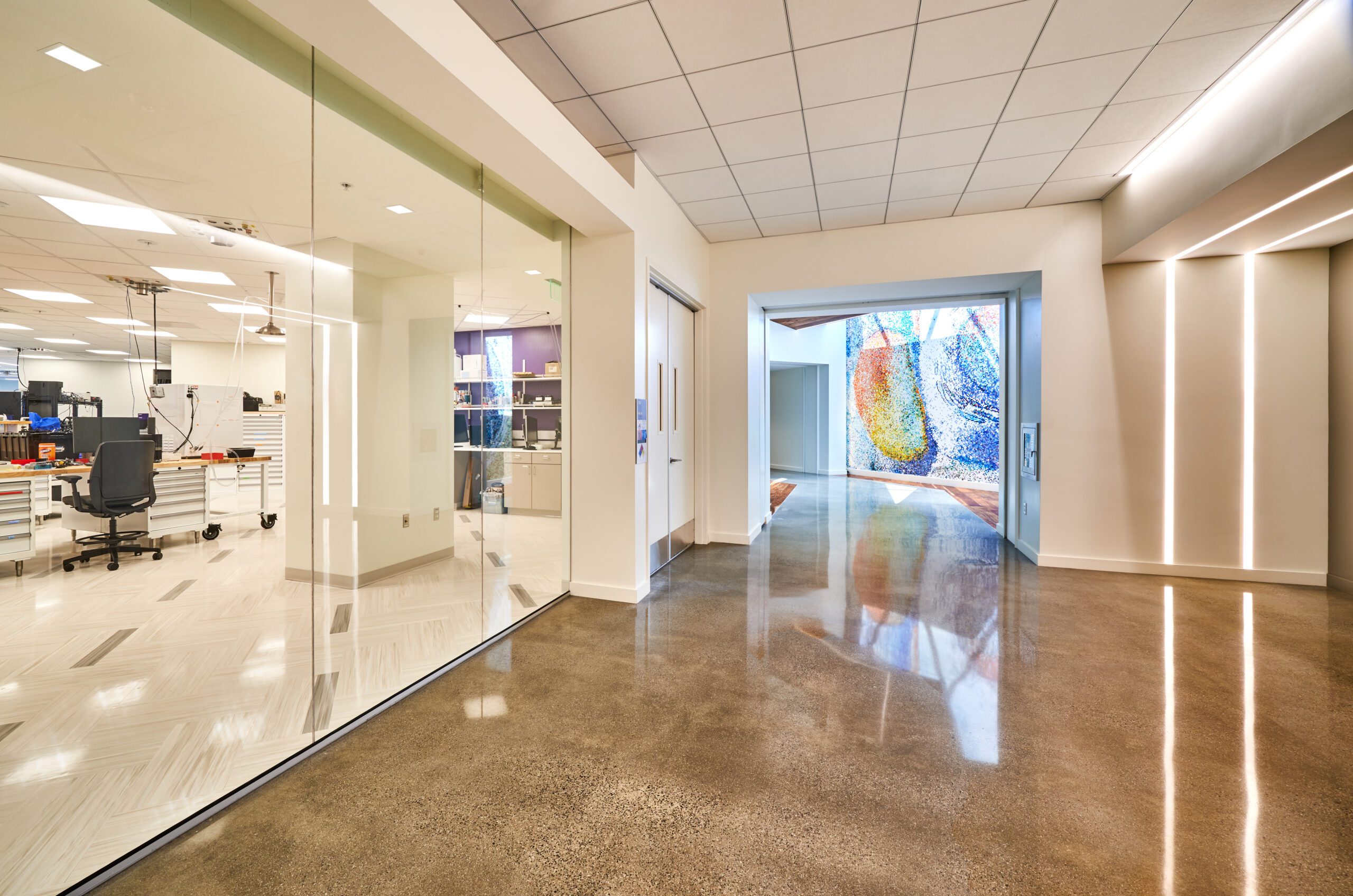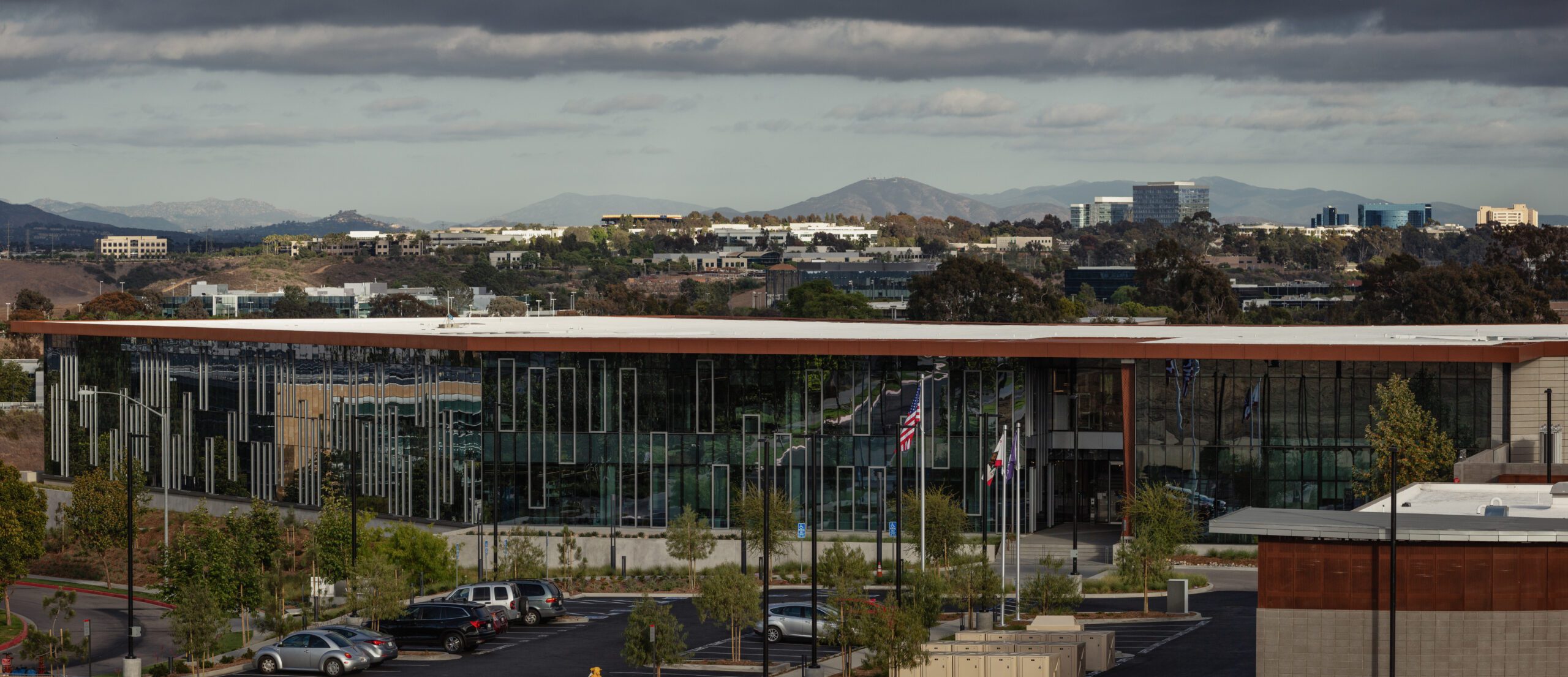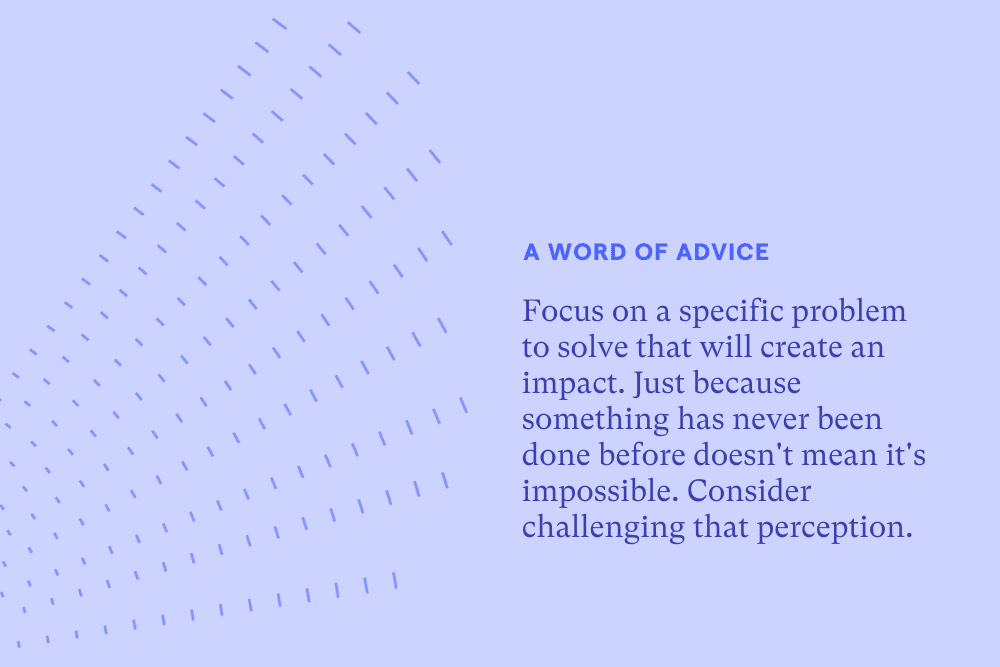February 7, 2023
Member Spotlight: Vertex Pharmaceuticals

Shaw Prize Winner Paul Negulescu Reflects on the Teamwork it Took to Find a Treatment for Cystic Fibrosis and Why Researchers Should Engage with the Patients They Are Helping
Paul Negulescu says he can’t recall a day throughout the span of his 20-plus year career as a researcher at Vertex Pharmaceuticals when he was unreachable to colleagues by phone. That changed last summer, when a camping trip in Baja California left him without cellphone service—and as luck would have it, someone was repeatedly calling him trying to deliver career-changing news. He and Michael J. Welsh, Director of the Pappajohn Biomedical Institute at the University of Iowa, were awarded the Shaw Prize in Life Science in Medicine for their groundbreaking research and therapies in treating cystic fibrosis (CF). Negulescu happened to check his email and saw multiple messages in his in-box—one that stood out was from Welsh saying they were named co-winners of the prize. Hearing it first from Welsh was a nice way to find out, Negulescu says. “Receiving this award was very humbling. When I started work in the CF field over 25 years ago, I could not have imagined winning an individual award. Everything we did and do is as part of a team.”
The Shaw Prize was established by a Hong Kong-based foundation more than 20 years ago and is called the “Nobel Prize of the East.” Negulescu and Welsh were named laureates of the 2022 prize for Welsh’s landmark discoveries of the underlying molecular defects that cause cystic fibrosis, and Negulescu’s role in developing medicines that can treat most people affected by the disorder. Cystic fibrosis is a genetic disease that affects about 80,000 people worldwide. It causes damage to the lungs, pancreas, and other organs, and can lead to other potentially debilitating conditions which affect a patient’s quality of life and lifespan. For years, CF patients took a multitude of pills daily and regular courses of antibiotics and many face the possibility of needing a lung transplant, according to the Cystic Fibrosis Foundation. Welsh’s and Negulescu’s discoveries not only helped the scientific community better understand the disease, but led to the development of Kalydeco (in 2012) and Trikafta (in 2019)—breakthrough treatments for CF that Negulescu was initially told were “impossible” to create.
Negulescu spoke with us to reflect on his career and passion for patient advocacy, how researchers can benefit by meeting the patients they are trying to help, his dedication to giving back as a founding member of Generation STEAM’s San Diego Festival of Science & Engineering, and advice he has for up-and-coming life scientists.

Lab space at Vertex Pharmaceuticals’ San Diego site
What makes cystic fibrosis particularly difficult to understand and treat?
Cystic fibrosis was difficult to treat for many years because we did not understand the cause of the disease and therefore could only treat the symptoms. This changed in 1989, when a team led by Lap-Chee Tsui and Francis Collins discovered CF was caused by mutations in a gene called CFTR, which encoded a protein, also called CFTR. Mike Welsh and his colleagues showed that the CFTR protein was an ion channel required for the lung and other organs to regulate salt and fluid transport. They also showed that CF-causing mutations reduced the CFTR channel’s function, which explained how the disease occurred. These discoveries provided the foundation for us to discover the CFTR modulator drugs that restore function of the mutated CFTR ion channel.
Before CFTR modulators were available, CF was treated by managing the symptoms. Trikafta addresses the underlying cause of CF and restores the lung’s ability to produce a salty fluid that thins mucus, allowing the lung to clear the bacteria and particles that we breathe in all the time. This has resulted in improved lung function, reduced the number of infections that require antibiotics, and a reduction in the number of patients requiring lung transplants.
The development of Kalydeco and Trikafta were unprecedented and took more than 20 years of research. What were some of the challenges you faced?
The biggest challenge for this program was that we needed to discover three different molecules and combine them in one pill to effectively restore the function of deltaF508-CFTR, the most common CF-causing mutation. This mutation deletes amino acid number 508, and causes two types of defects in the CFTR protein. The first defect is that the protein is not properly processed inside the cell and does not reach its proper location at the cell surface. To address the processing defect, we discovered compounds known as ‘correctors,’ which bind to the CFTR protein to improve its processing and trafficking to the cell surface. The second problem is that the small amount of CFTR that gets to the cell surface is defective as a chloride ion channel. To fix this defect, we had to discover compounds we called ‘potentiators’ of channel gating.
It turned out that in discovering correctors, we had difficulty finding a single corrector that moved a sufficient amount of deltaF508 to the surface to have optimal restoration of function. We had to discover two correctors and combine them together. We ended up with two correctors and a potentiator, combined them to nudge CFTR to the cell surface, and then facilitate its function as a channel—that took 20 years. In addition, there is a clinical development challenge of testing three different compounds at the same time in people, and co-formulating them in one pill so that patients can take all three at once. We’re still working on improved versions of these combinations.
There were other challenges as well. For example, our first study was in people with CF with a very rare mutation that we thought would respond to the potentiator alone. We were warned by some experts in the field that it would be impossible to run a study. How can you do a clinical study where there’s only a thousand patients in the world, and not all of them are going to want to be in a study? But guess what? Thirty percent of the world’s population with this mutation volunteered to be in the study. That’s a testimony to the strength of the connection to the CF community.
Whatever the challenges were, we took a step-by-step approach and worked with the CF community to move through them. This story is about science, persistence, and teamwork.
The Shaw Prize’s website has a video of you engaging with Jennifer Gell and her two children, who both have cystic fibrosis. You have been connected to Jennifer and her family for nearly 20 years. How much of a role did the cystic fibrosis patient community play in finding these new therapies?
This was a journey with the CF patients and families from the very beginning. As the work advanced, they participated in the clinical studies and encouraged our scientists and our staff. We came to feel like we were dependent on each other for success. It’s not just about science and medicine, it’s about people, and how we can bring both science and the humanistic aspect together and the synergies that occur when you do that. I learned through this process it’s not typical in our industry to have these connections with the patients.
Why is it important for researchers and drug developers to engage with patients?
There are good reasons to separate the science from the clinic and patients—you don’t want to build false hopes, and you want to maintain a professional distance because it can get very personal. But on the other hand, it needs to be. In this journey, we found a way to blend the personal with the professional. If you come and visit our site [Vertex Pharmaceuticals’ San Diego location], you’ll see that we built it to be a place where people can come and talk to us about our work. We do tours, and meet with patients and their families. We show them the work we do—the building is laid out so they can experience the science, and we always learn from those discussions. I learned about CFTR from textbooks and scientific papers, but I learned about cystic fibrosis from patients. They taught me what it was like to live with it.
When we were first thinking about the medicines, we thought about an inhaled therapy for the lungs and we were working with the Cystic Fibrosis Foundation on some of the approaches that we could take. I met a patient at one of these meetings, and he said, ‘I want to tell you something about CF.’ He pointed to his shoes—they were leather and crusted with white salt. Many CF patients have very salty skin, because there’s a defect in sweat chloride secretion that results in an inability to reabsorb the chloride. He said, ‘I’m wearing leather shoes because it helps explain how CF affects my whole body. And if you’re thinking about another inhaled therapy, don’t do it. My lungs can’t take it.’
After that, I told the team, ‘I think we should really focus on an oral medication that gets to the lungs, and also to the other organs.’ There were some additional complications to a pill, but it was the right thing to do. All in all, that patient informed the drug before we even started working on it.
Even today, years later, the input is still important, and we listen. Even little things like packaging—they gave us feedback that the packages were hard to open, and so we fixed that.

The main lobby at Vertex Pharmaceuticals. The interior was designed to be inviting so that patients and their families can meet with researchers and tour the space.
How can researchers become more involved in engaging with the patients they want to help?
You have to talk to physicians and patients in the early stages of your research, not at the very end. The day you start thinking about a project is the day you have to talk to them. Ask questions, and start with advocacy groups. There are many of them, and they exist to provide education about the disease you are researching. Find the ones that really are well-organized to provide information in a way that you can use. Sometimes, they have statistics that help you understand the disease or they’ve done their own research.
We learned that the groups are very responsive to input, and they can help get information for you—you don’t have to do it all yourself. They can be a partner, and you can learn what they need. If someone who is not in the industry is wondering how they can get the scientific community interested in their medical problem, the Cystic Fibrosis Foundation has a good playbook for that.

Vertex Pharmaceuticals’ San Diego site
As a founding member of Generation STEAM’s San Diego Festival of Science & Engineering, you generously provided the nonprofit with a portion of your winnings from the Shaw Prize. Giving back is clearly a value that is important to you—what role does that play in your career and life?
Giving back is important to me because I feel that much has been given to me. I believe that generosity needs to be passed on to stay alive. It was a privilege to be able to donate my portion of the Shaw Prize to several worthy causes, including Generation STEAM. Being involved with the San Diego Festival of Science & Engineering since its inauguration taught me first-hand that as professional scientists, we can do more to share what we do. We owe it to our kids to help them see that they can be the innovators of the future. I’m really looking forward to attending this year’s Festival at Petco Park in March.
What has changed for you since winning the Shaw Prize?
As a result of the award, I have opportunities to share the story as an example of the exciting, impactful science we do in the pharmaceutical and biotechnology fields. Hopefully, I can help inspire others to achieve similar or even better results.
What is your biggest challenge right now?
I’m focused now on advancing new non-opioid medicines to treat acute and chronic pain. I’m excited to apply some of the lessons I learned in CF to a different medical problem.
Lastly, what advice do you have for up-and-coming scientists?
My advice would be to try to work on an important problem that you care about and commit yourself fully to solving that problem. It’s often the most difficult challenges that are the most worth addressing. If you’re going to go after something difficult, or something that has never been done—and could be considered ‘impossible’—consider whether it is an important enough problem to try to break through that perception. Separate what is unprecedented from what is impossible—do your research. It might truly be impossible, but it could just be unprecedented and possible.
It’s not just about science and medicine, it’s about people, and how we can bring both science and the humanistic aspect together and the synergies that occur when you do that. I learned about CFTR from textbooks and scientific papers, but I learned about cystic fibrosis from patients. They taught me what it was like to live with it.
